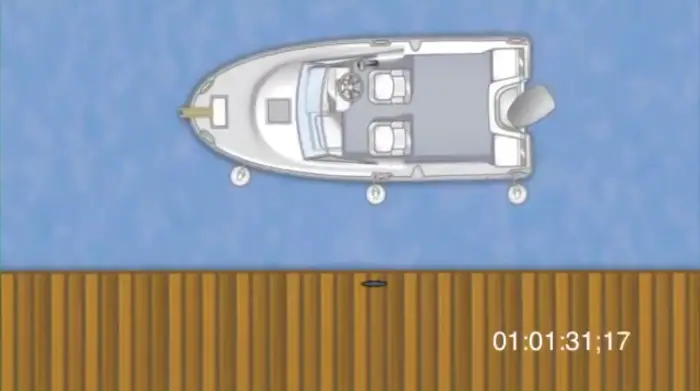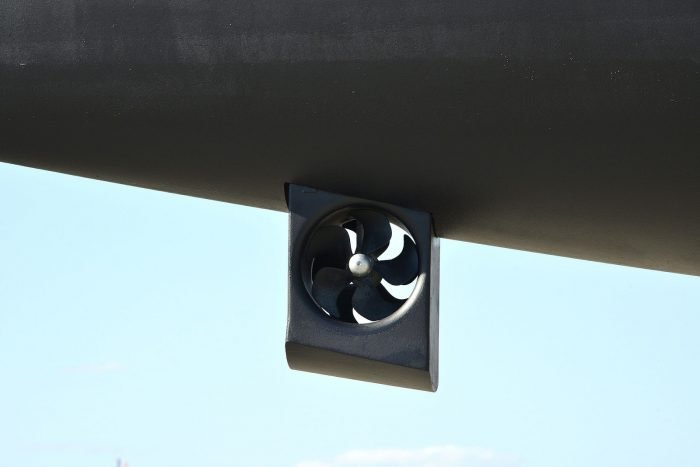One of the most crucial parts of riding a boat is docking. This is because you can’t continue riding forever and you have to get back to the dock. Now, getting your boat out into the water is easy, but getting it back to the dock is more difficult.
It’s comparable to parking a car but docking a boat requires more technique. Docking your boat wrongly has the potential of doing damage to your shiny boat or even worse, causing injuries to your family members on board.
Docking a boat is more difficult than parking your car because, in a boat, you’re not in control of all the conditions. Apart from being able to maneuver your boat expertly, you’ll also contend with the wind and in some cases the water current.
This is why docking a boat may look different every time you do it. You always have to be conscious of the conditions like wind and current and also how you handle your boat.
As a beginner, after reading all of the complications about docking a boat, it is easy to grow afraid of bringing your boat to the dock. You need not fear. Because that fear will cause more problems for your docking than even your naivety.
This fear could also be related to how big or expensive your boat is. You don’t want to bash your luxury boat against the dock.
And if your boat is big, it could give you more problems in docking it. First of all, the wind will have more effect on your boat due to its size and you have to be more calculating to dock it. There may also be visibility problems due to its size.
There may be nerves if you’ve not docked a boat many times, but you must know that you’ll improve with more practice and patience. This post is going to explain tips for docking your boats to make it as easy as possible for both your boat and the people on board.
Line Up Your Approach
When you approach the dock, you have to line up your approach. It’s advisable to approach the dock at an angle of 30 degrees to 45 degrees, depending on the speed of the wind and its direction.
If the wind is moving towards the dock, for example, you can line your boat at an angle closer to 30 degrees than 45.

Approaching at an angle of around 45 degrees could cause your boat to hit the dock before you can maneuver it.
If however, the wind is moving away from the dock, you can approach the dock at an angle closer to 45 or a bit more depending on the speed of the wind. The angle of your approach may largely be determined by the speed of the wind.
To reduce the effect of wind on your boat, you have to reduce the sail area, that is all the flat surfaces on your boat that can catch the wind like cabin bulkheads and windows.
For instance, opening the windows of your boat will see the wind blow through and thus reduce the effect of wind on the boat.
Go Slow
There is an old saying: ‘never approach a dock any faster than you’re willing to hit it.’
Although, you never plan to hit the dock, sometimes, circumstances beyond your control could make your docking much more difficult than it should be.
Moving at a slow speed means that even when docking goes wrong and you hit the dock, it won’t be at a speed that does damage your boat or injure the people on board.
Apart from preventing damage to your boat, it is easier to control your boat when it is slower which makes your docking easier.
Get Your Fenders Ready
The fenders are the protective measure to prevent your boat from hitting the dock. Even when your boat hits the dock at the side, the fender will take all the shock and your boat will have no contact with the dock itself.
But you have to note that the fender doesn’t protect all parts of the boat. The fender doesn’t provide 100% protection against hitting the dock. If you approach the dock head-on and mess up your turn, you could get your boat hitting the dock with a risk of damage.
To make your fenders as effective as possible, place them at an appropriate location on your boat. Placing the fenders too high beside your boat could see it hanging at the side of your boat and above the pier.
This is the same thing as not having a fender at all because your boat is still exposed to damage. If you release your fenders too low, you also render it useless as they can get caught under the pier and leave your boat unprotected.
When you place your fender, you must place it at the right height and also at the right position along the side of your boat. The best position is the most probable part of your boat that will make contact with the pier.
When you place your fenders properly, it makes docking easier because you know that no damage will be done to your boat even if you fail to dock successfully.
Time Your Swing
When approaching a dock, you must time your swing appropriately. Swing too soon, and you’re too far from the dock. Swing too late though, and you collide with the dock.

I think swinging too late should be avoided as it causes a bigger problem.
Swinging soon has its side effects too as you could end up wasting a lot of fuel. You have to get your timing right especially if you’re docking in a marina with many boats.

While about to swing, you must always look out for mooring lines. Mooring lines of yours or of a neighboring slip could have fallen into the water.
Unfortunately, the current may have stretched the line out into your path. Getting lines tangled in your engine could lead to other problems entirely different and bigger than your docking fears.
Increase Power As You Swing
Earlier, I told you to approach the dock slowly. But while approaching the dock at a slow speed, it is easier to lose control of your boat.
It is also almost impossible to make your swing properly at such a low speed. Because your engine needs a higher power to swing effectively.
As with most other things about docking, this requires the right timing. You need to increase the power of your engine at the right time, which is after you have steered your boat.
At this time, the increased power is helping your boat swing properly rather than increasing speed. You must take caution to always steer before applying more power to your engine.
Applying more power to your engine before you steer will increase the speed of your boat and makes your swing much more difficult to achieve. In fact, you could end up hitting the dock hard if you do that.
When applying power to your boat, you must make sure that you apply short bursts of power instead of steady power. Steady power could let your boat gain momentum fast and make maneuvering more difficult.
Dock Your Boat
After you swing your boat, you can now align it to the dock. If you have other people on board, this becomes easier.
When you get to the side of the dock, someone gets on the dock to tie the bow to the dock and then puts your boat in a bit of reverse so that you can tie the stern to the dock too.
If you’re alone in the boat, it means you have to leave the steering wheel for a while and tie your boat to the dock. Although you can still tie your boat to the dock without it, it is advisable to hold a piling while tying your boat to the dock and while getting off your boat.

It is important to note that you must never try to stop a moving boat with your arms or legs as this could lead to injuries. And don’t switch off your engine until all the lines are secure. Switching off your engines means you have less control of the boat.
You never know if your crew members would let the rope slip off their hands or if their hands will slip off the piling. In such cases, it will be easier to maneuver your boat if the engine is still on.
Make sure all the lines are secure and your boat is successfully docked before you switch off its engine.
You Can Try Again
It is possible that after you have tried your maneuver, you’re still too far from the dock, there’s nothing wrong with trying again.
Your failure to dock your boat could have been caused by many factors. It could be that your angle of approach was too small or you swung your boat too fast. Whatever the cause of being unable to dock, you would have noticed if you paid attention.
You can ride your boat out into the water and try another approach at docking it. This time you can make changes to avoid the reason your boat failed to dock in the first instance.
Know that trying again is another opportunity to learn. The more you dock your boat, the more automatic this process becomes. When you repeat the process as many times as possible, then all the steps will just be part of you.
Use A Bow Thruster
If you still find it impossible to dock your boat after many attempts and you feel that you have been wasting too much fuel, you could be one of the few people who needs a bow thruster.
The bow thruster, also called a maneuvering thruster, is a propulsion device built into or mounted to the bow of a boat to make it easier to control. Bow thrusters make docking easier.

With the use of a bow thruster, you can easily turn your boat to the port or starboard side. This can also be done without using the main engine which requires some forward motion for turning.
A bow thruster could especially be useful if you have a large boat. A large boat could be very difficult to dock if you’re less experienced in docking a boat or if you have to dock it in a crowded marina.
Your large boat probably costs a lot of money and you don’t want to do damage to it due to your inexperience. A bow thruster could be the best solution in this case.
Takeaway
Riding your boat is wonderful, but you must also learn how to dock your boat. And without doing damage to your boat or causing injuries to the people on board.
Fear is the biggest problem you can have with docking your boat. Fear will make you avoid it and the more you avoid it, the more difficult it becomes.
The wind and current may look like disadvantages while trying to dock your boat. But this can turn into an advantage once you get the hang of docking your boat. You know how to maneuver against wind and current.
If you want to know how to dock your boat, you have done well by reading this post. Because education is crucial to being more effective. What is even more important is that you go out into the water today and follow these steps to dock your boat.
Going through the process in your boat means you can get the feel of the process yourself. You can even form your own rules whether consciously or unconsciously that suits you when you’re docking your boat.
Go out today and dock your boat like a boss!
